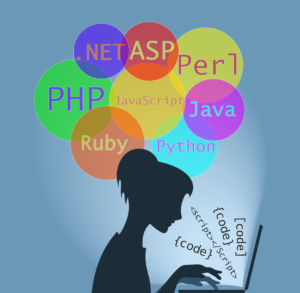Python developers aren’t just building smarter systems, they’re optimizing every layer of the tech stack, including how they manage communications. In 2025, one area that’s ripe for innovation is email automation.
With Mailchimp’s rising costs and growing limitations, devs are increasingly leaning toward tools that offer enhanced flexibility, API-centric design, and robust automation capabilities. All of this is within reach for Python developers.
Suppose you're looking for a deeper breakdown of how modern platforms compare, including cost, features, and use cases. In that case, this Mailchimp alternatives guide highlights some of the most viable tools for technical teams.
But let’s zoom out and discuss why this matters in Python.
Building Smarter Pipelines: Email As a Microservice
Developers often think in services, endpoints, and modular architecture. So why should email be any different?
By treating email delivery as a microservice, Python teams can integrate message flows into backend logic using frameworks like Flask, Django, or FastAPI. The power lies in triggering dynamic campaigns, transactional emails, or drip sequences—all directly from application events.
With the right email tooling, you can easily complete the following:
- Trigger emails when a database field changes
- Run A/B tests based on real-time behaviors
- Pipe user interactions into marketing funnels
- Segment users programmatically using tagging logic
This approach ensures communications are timely, personal, and entirely scriptable.
Email Automation in Python: Tools and Tactics that Really Work
Python’s ecosystem already supports a range of options for sending emails: from native `smtplib` for basic SMTP delivery to libraries like `Flask-Mail`, `django-anymail`, and `Sendgrid-python` for more structured workflows.
But the real advantage comes from integrating these with platforms that allow developers to:
- Push email templates via API
- Trigger campaigns on data events
- Access webhook-based analytics
- Use JSON payloads to manage recipient variables
Many platforms now allow for event-driven logic that speaks fluently with Python apps, minimizing reliance on marketing teams to launch campaigns. Python scripts can invoke, test, and scale marketing logic like any other backend job. And the results speak volumes.
When Mailchimp Doesn’t Fit the Stack
While Mailchimp is the default email marketing tool for many startups, it wasn’t built for Python developers.
Mailchimp Limitations Include The Following:
- Strict pricing tied to contact list size
- Limited transactional email options without separate add-ons
- Poor webhook documentation and SDK support
- Duplicate charges for the same contact across lists
- Lack of integration with fast-moving CI/CD pipelines
If you’re working with complex user journeys, real-time segmentation, or multiple environments, you’ll want something that aligns with developer logic—not a no-code UI alone.
That’s where Mailchimp alternatives enter the picture: solutions that let you build, test, and iterate like you would any backend module.
For more Python insights, tutorials, and tools that support your journey as a developer, explore the wealth of resources over at Python Central.
Whether you're building backend logic or scaling your automation stack, the site offers practical guidance tailored to your evolving needs.
Final Thoughts: Python + Email = Scalable Conversations
This table presents vital email-related industry statistics from Statista, illustrating the rapid growth of email marketing, developer language preferences, and the increasing reliance on automation to streamline communications.
These figures support the idea that modern Python developers are driving smarter workflows through dynamic integration and automation.
The following information provides illustrative projections for the future growth and development of this important marketing resource.
| Category | Statistic |
| Global Email Marketing Revenue (2020) | $7.5 billion |
| Projected Revenue (2027) | $17.9 billion |
| Expected CAGR (2020–2027) | 13.3% |
| ROI Doubled for Email Campaigns (2023) | 52% of marketers |
| ROI Increased 4x (2023) | 5.7% of marketers |
| No ROI Improvement (2023) | 12.9% of marketers |
| Marketing Automation Revenue (2024) | $8 billion |
| Projected Revenue (2032) | $21.7 billion |
| Most Used Programming Languages (2024) | JavaScript (62%), HTML/CSS (53%), Python (Top 5) |
Sources: Statista and J.G. Navarro
As customer engagement becomes more real-time and data-driven, Python developers are in a unique position to lead the charge.
By Embedding Email Automation Into the Dev Stack:
- Support becomes proactive
- User journeys feel more personal
- Teams can scale without marketing bottlenecks
Whether you’re running an API-first SaaS, building niche tools, or scaling a community, the right Mailchimp alternative can supercharge your email layer without bloated pricing or locked-down features.
The future of messaging is modular. And in 2025, Python devs are the ones wiring it together. Fortnately there are efficient, functional and cost-effective solutions to bolster email productively and they are ready to be implemented STAT.

